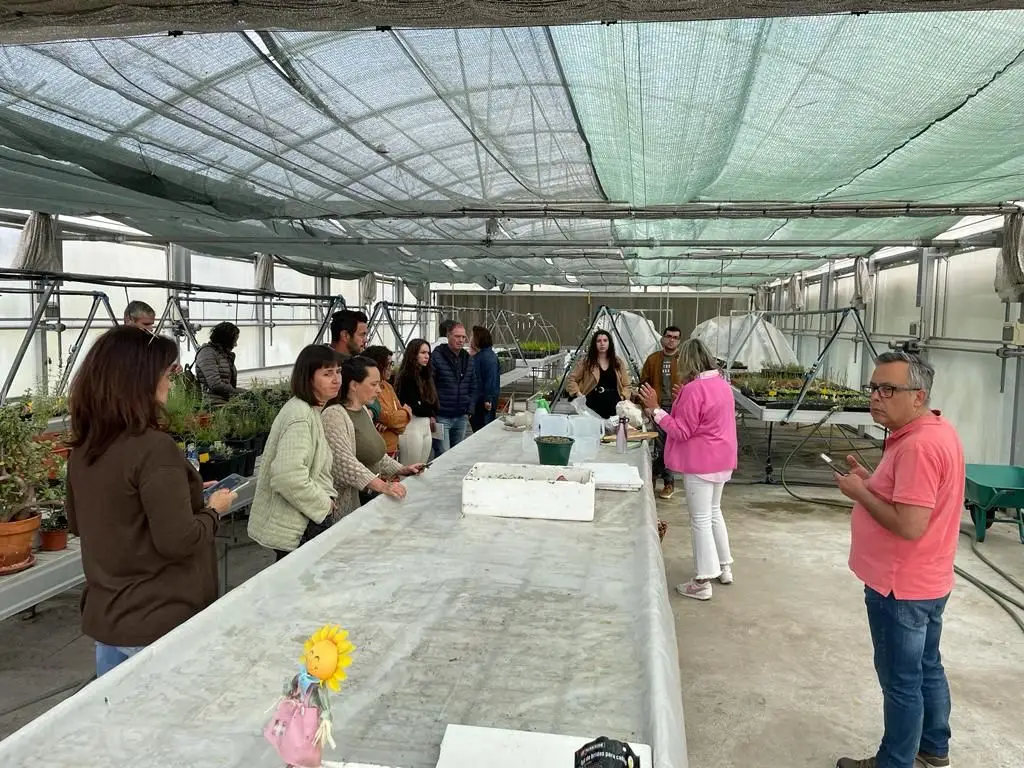There are Portuguese plants “highly sought after” for making cosmetics and medicines: this project was created to give them a world

From rockrose, which grows naturally in forests, to the strawberry tree, the aim of the PAM4Wellness project was to align Portuguese production of these aromatic and medicinal plants with the international market and demonstrate the potential for their use in cosmetics and medicines.
Aromatic and medicinal plants were the starting point for a project that aims to boost a Portuguese sector that generates curiosity at international fairs. PAM4Wellness aimed to value these plants by directing them towards the pharmaceutical and cosmetics industry.
“I felt it was difficult to build a bridge between the scientific knowledge that exists at the university and the producers and the value chain, in order to then impact them”, explains Ana Palmeira de Oliveira, a professor at the University of Beira Interior who is responsible for PAM4Wellness. In a previous project to biologically characterize the aromatic and medicinal plants produced in Portugal, Ana also realized the lack of a strategy for this sector: “The producers produced what their neighbors produced or what some associations linked to the primary sector advised them to do”, she tells Expresso. “ I often went to meetings with producers and they asked me what they should produce, but I replied that it depended on what the market needed. This was something that needed to be built ”, says the President of the Beira Baixa Business Association.
To overcome these obstacles, the PAM4Wellness project was created with the aim of training the value chain of Portuguese aromatic and medicinal plants , produced or collected from the forest during cleaning processes, and using them as valuable raw materials for the cosmetics and pharmaceutical industries. To achieve this, training for the business was crucial, as it was “a weak point in the sector” due to the lack of organization.
The project studied the plants that are produced in greatest quantity in Portugal and compared them with the needs of the industry in order to find the most relevant ones and form a set of guidelines for the sector. “The project initiated a process”, explains the researcher, highlighting that the diagnosis to assess whether production is adequate to the market needs must be carried out within five to ten years, in order to guarantee the competitiveness of Portuguese aromatic and medicinal plants that “are highly sought after by the European industry for the health sector” .
“We can’t look at the international market and then not be able to respond; that’s the worst thing that can happen,” warns Ana Palmeira de Oliveira. To prevent this from happening, the sector needs to be professionalized by aggregating production and establishing common prices. It used to be common, “for example, for each producer to sell their lemon thyme to France individually and put their load on the company’s truck, which would come and pick it up at the price they had set. So, we could have loads from different producers, each selling at their own price,” she explains.
One of the “great advantages” of this sector in Portugal is that it is almost exclusively organically produced , which allows us to create a “national brand to showcase quality, excellence, rigour and exceptionality in aromatic and medicinal plants produced in Portugal”. “We do not want to compete with large producers, for example in Morocco, who produce at much lower prices than us”, but “in the European market for sectors that are looking for high-quality plant material or extracts and who pay more for it” , says Ana Palmeira de Oliveira.
At an international cosmetics industry fair, the university lecturer recalls that when explaining to businesspeople the particularities of the aromatic and medicinal plant sector in Portugal, there was always a lot of interest. “ When I told one of the big names in the cosmetics industry that sells plant extracts that almost 100% of our production was organic, he was thrilled ,” she says.
The plants produced can be used in creams due to extracts with anti-aging properties , such as rockrose, an endogenous plant that grows naturally in forests and is “cut down every year to prevent fires and is mostly wasted”. In addition to this attribute, the resin that forms when the plant is cut could also be used as a perfume fixative. The researcher warns, however, that “we are more familiar with the bioactive properties of these extracts in a general cosmetics industry logic and not so much in perfumery”. Another plant highlighted in this project was lemon thyme, much sought after by the industry, and whose Portuguese species has a set of differentiating chemical characteristics. The strawberry tree was also identified as one of the plants with the greatest potential.
As PAM4Wellness also aimed to guide production for the pharmaceutical industry, they provided a set of guidelines so that producers could adapt their production to a more demanding industry. “There are very specific rules for classifying a herbal medicine, which must comply with the European Medicines Agency’s own monographs,” he explains. Extracts from these plants can, for example, be used in medicines for liver diseases.
During the project, they also transferred knowledge, such as a micro-irrigation system to save and evaluate nutrients in water and a plant tracking tool. Ana Palmeira de Oliveira highlights as one of the greatest achievements of this project the creation of a plan by the Proença-a-Nova City Council to organize producers and implement real business models, in addition to creating logistical infrastructures . “PAM4Wellness also fueled the opportunity to create an initiative in Portugal to aggregate and implement a strategy to value the sector at a national level” because “as university professors, this is not part of our mission, there has to be a structure that takes this knowledge”.
The project manager also warns that the production of aromatic and medicinal plants “is not a minor activity, it is an activity that requires a lot of dedication”. “If we want a more balanced country and in which less favored regions also have opportunities to embrace new areas with greater professional development, I think this is a fundamental sector”, she states.
The PAM4Wellness project developed by the University of Beira Interior, together with the Polytechnic Institute of Castelo Branco, received funding of 950 thousand euros through the COMPETE 2020 program, of which around 808 thousand euros came from the European Regional Development Fund (ERDF).
Ana Palmeira de Oliveira believes that the investment was “fundamental” in creating a multidisciplinary team and that without it “it would be impossible” to hire so many human resources and carry out initiatives with producers. Without this support, it would be difficult to develop a project “that implemented processes and fueled the implementation of initiatives that can transform this sector in Portugal”.
Discovering ideas that contribute to a more competitive, greener Europe, more based on social rights, are the objectives of the Mais Europa project.
This project is co-financed by the European Commission, and all content is created, edited and produced by Expresso (see code of conduct ), without external interference. The European Commission is not responsible for the data and opinions expressed.
expresso.pt





